A Small 18th century George I period table clock by Gamaliel Voyce, c.1725
Sold
Request Information
Follow Us
A Small 18th century George I period table clock by Gamaliel Voyce, c.1725
An extremely attractive early 18th century George I period table clock of small proportions by Gamaliel Voyce, c.1725.
The proportions of the petite clock (measuring only 14 inches (36cm) with the handle up) are such that is difficult not to fall in love with it. The timepiece has a five knopped and finely finned pillar gut-fusee movement with verge escapement and a short knife-edge suspended pendulum. It has a pull quarter repeat on two vertically positioned bells indicating the hours on the larger bell followed by the quarter hours sounding a ting-tang strike on both bells. The profusely engraved backplate and verge cock apron depict symmetrical floral and scrolling leaf and vine patterns around a prominent signature cartouche: Gam Voyce London.
The break-arch brass dial has a silvered chapter ring, a circular signature plaque to the arch, date aperture right under the middle and a false pendulum aperture under the XII. The chapter ring has Roman numerals within a minute ring and an outer Arabic five-minute track. The dial centre is finely matted and the gilt-brass corner spandrels are of the crown and sceptre design, while the arch spandrels depict putti looking outwards. The time is indicated by a fine pair of pierced blued steel hands.
The ebonised fruitwood veneered oak case has an inverted bell top surmounted by a brass swinging carrying handle, well-formed and returned top moulding and door edge moulding. All sides are glazed so that the fine movement is almost entirely visible. The arched side panels are surmounted by smaller shaped windows. Both doors have fretted quadrants backed with red silk and well-formed elaborated concave mouldings.
Condition
Good. Wear consistent with age and use. The case is in superb and original condition. The movement is fully restored and keeps very good time.
Dimensions
Height: 14.57 in. (37 cm)
Width: 7.88 in. (20 cm)
Depth: 5.91 in. (15 cm)
Literature
Dowler G. Gloucestershire Clock and Watchmakers. 1984, Phillimore, Chichester, pp. 102-107; Grange M. A bell ringer’s clock. Antiq Hor 1998; 24(3): 210-216.
PREVIOUSLY SOLD
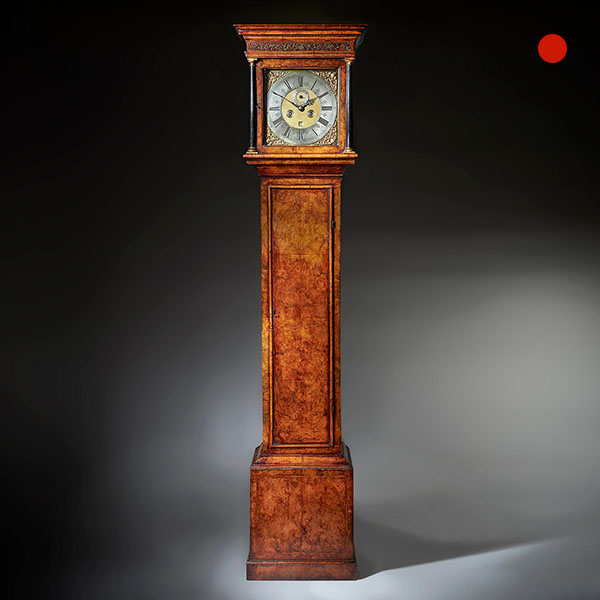
A Fine 18th-century Queen Anne Burr Walnut Eight-Day Longcase Clock
A Fine 18th-century Queen Anne Burr Walnut Eight-Day Longcase Clock Sold Follow UsA Fine 18th-century Queen Anne Burr Walnut Eight-Day Longcase Clock A superb early 18th-century eight-day Queen Anne longcase clock by the famous maker...
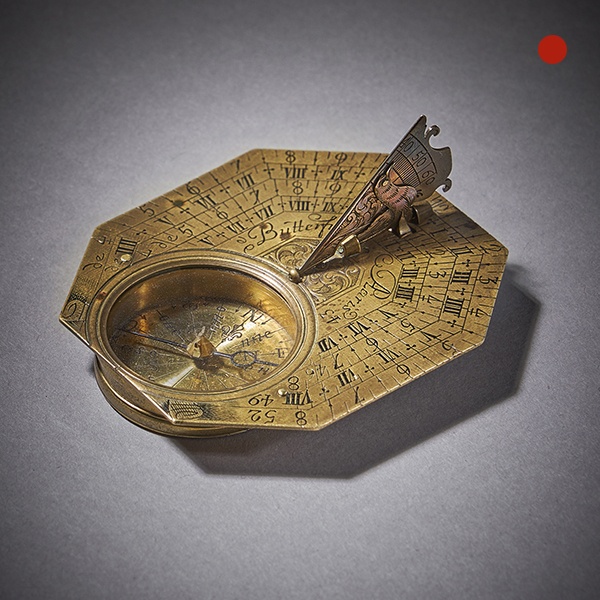
Fine Brass Pocket Sundial and Compass by Michael Butterfield Paris, circa 1700
Fine Brass Pocket Sundial and Compass by Michael Butterfield Paris Sold Follow UsFine Brass Pocket Sundial and Compass by Michael Butterfield Paris A fine brass Anglo-French octagonal pocket sundial with compass by Michael Butterfield, circa...
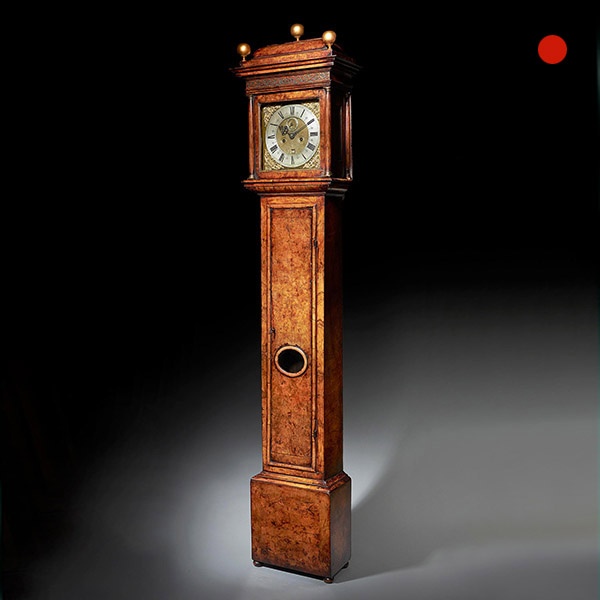
17th Century William and Mary Eight Day Burr Walnut Longcase Clock, John Martin
17th Century William and Mary Eight Day Burr Walnut Longcase Clock, John Martin Sold Follow Us17th Century William and Mary Eight Day Burr Walnut Longcase Clock, John Martin The attractive burr walnut-veneered oak case is of classic design...

18th Century German Equinoctial Pocket Sundial and Compass by Ludwig Theodor
18th Century German Equinoctial Pocket Sundial and Compass by Ludwig Theodor SOLD Follow Us18th Century German Equinoctial Pocket Sundial and Compass by Ludwig Theodor From the first quarter of the 18th century - a German brass equinoctial...
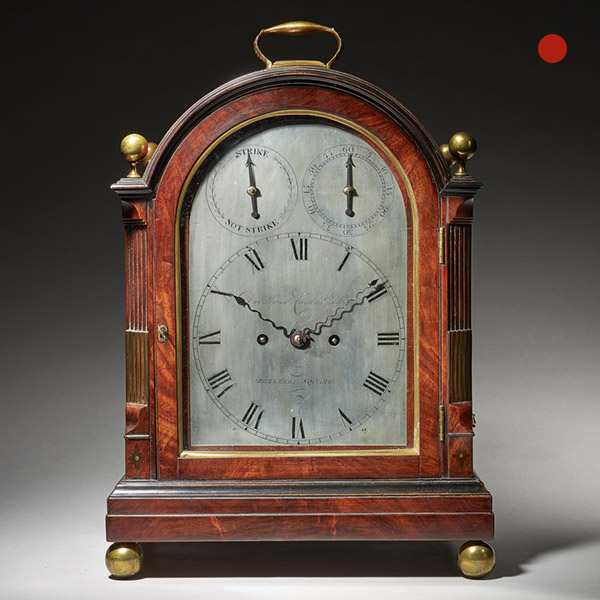
Fine George III Eight-Day Striking Mahogany Bracket Clock with Trip Repeat
Fine George III Eight-Day Striking Mahogany Bracket Clock with Trip Repeat SOLD Follow UsFine George III Eight-Day Striking Mahogany Bracket Clock with Trip Repeat A fine George III eight-day striking mahogany bracket clock with trip repeat...

Fine 17th Century Charles II Spring Driven Table Clock by Deodatus Threlkeld
Fine 17th Century Charles II Spring Driven Table Clock by Deodatus Threlkeld SOLD Follow UsFine 17th Century Charles II Spring Driven Table Clock by Deodatus Threlkeld The eminent maker Deodatus Threlkeld (1658-1732) was an apprentice of...

A Fine 18th-century Queen Anne Burr Walnut Eight-Day Longcase Clock
A Fine 18th-century Queen Anne Burr Walnut Eight-Day Longcase Clock Sold Follow UsA Fine 18th-century Queen Anne Burr Walnut Eight-Day Longcase Clock A superb early 18th-century eight-day Queen Anne longcase clock by the famous maker...

Fine Brass Pocket Sundial and Compass by Michael Butterfield Paris, circa 1700
Fine Brass Pocket Sundial and Compass by Michael Butterfield Paris Sold Follow UsFine Brass Pocket Sundial and Compass by Michael Butterfield Paris A fine brass Anglo-French octagonal pocket sundial with compass by Michael Butterfield, circa...

17th Century William and Mary Eight Day Burr Walnut Longcase Clock, John Martin
17th Century William and Mary Eight Day Burr Walnut Longcase Clock, John Martin Sold Follow Us17th Century William and Mary Eight Day Burr Walnut Longcase Clock, John Martin The attractive burr walnut-veneered oak case is of classic design...

18th Century German Equinoctial Pocket Sundial and Compass by Ludwig Theodor
18th Century German Equinoctial Pocket Sundial and Compass by Ludwig Theodor SOLD Follow Us18th Century German Equinoctial Pocket Sundial and Compass by Ludwig Theodor From the first quarter of the 18th century - a German brass equinoctial...

Fine George III Eight-Day Striking Mahogany Bracket Clock with Trip Repeat
Fine George III Eight-Day Striking Mahogany Bracket Clock with Trip Repeat SOLD Follow UsFine George III Eight-Day Striking Mahogany Bracket Clock with Trip Repeat A fine George III eight-day striking mahogany bracket clock with trip repeat...

Fine 17th Century Charles II Spring Driven Table Clock by Deodatus Threlkeld
Fine 17th Century Charles II Spring Driven Table Clock by Deodatus Threlkeld SOLD Follow UsFine 17th Century Charles II Spring Driven Table Clock by Deodatus Threlkeld The eminent maker Deodatus Threlkeld (1658-1732) was an apprentice of...
YOU MAY ALSO LIKE
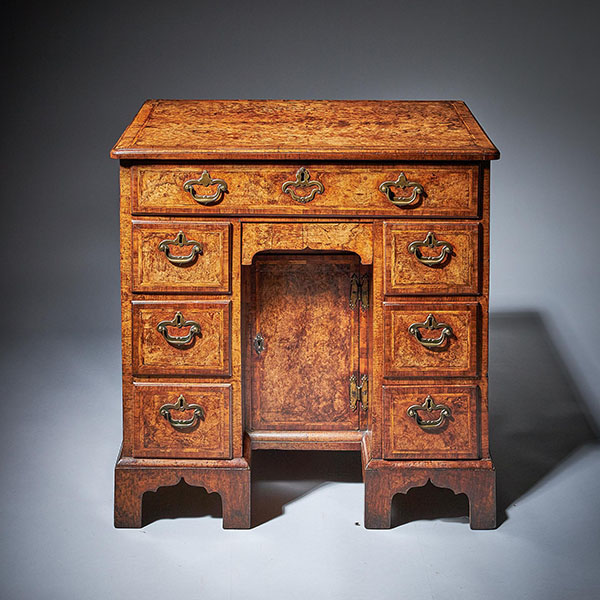
Rare Burr Walnut George II 18th Century Kneehole Desk, circa 1730-1740. England
Rare Burr Walnut George II 18th Century Kneehole Desk, circa 1730-1740. England £28,900Follow UsRare Burr Walnut George II 18th Century Kneehole Desk, circa 1730-1740. England Rare Burr Walnut George II 18th Century Kneehole Desk / Bachelor's...

A Fine 17th Century William and Mary Kingwood Strongbox or Coffre Fort, Circa 1690
A Fine 17th Century William and Mary Kingwood Strongbox or Coffre Fort, Circa 1690 £10,900Follow...

A Fine George III Chippendale Mahogany Dumb Waiter, Circa 1760 England
A Fine George III Chippendale Mahogany Dumb Waiter, Circa 1760 England. £5,600Follow UsA Fine...
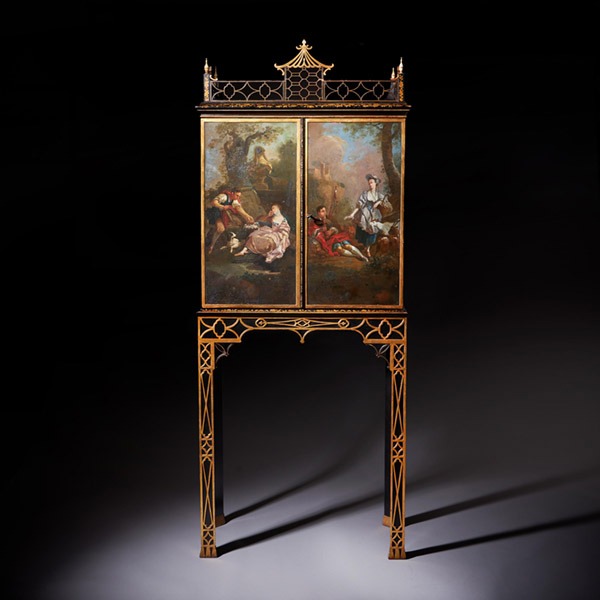
A Rare Chinese Chippendale George III cabinet on stand, circa 1760 England
A Rare Chinese Chippendale George III cabinet on stand, circa 1760. England £38,000Follow UsA Rare...
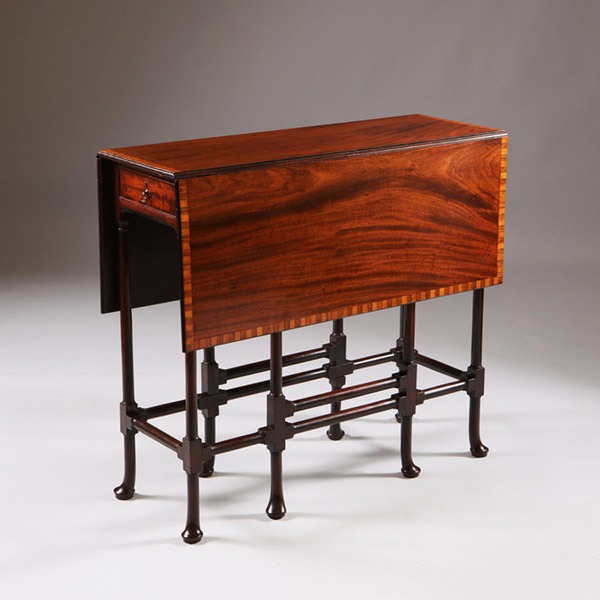
George III mahogany spider-leg table attributed to Thomas Chippendale 1768
A George III mahogany spider-leg table attributed to Thomas Chippendale 1768 £12,000Follow UsA...
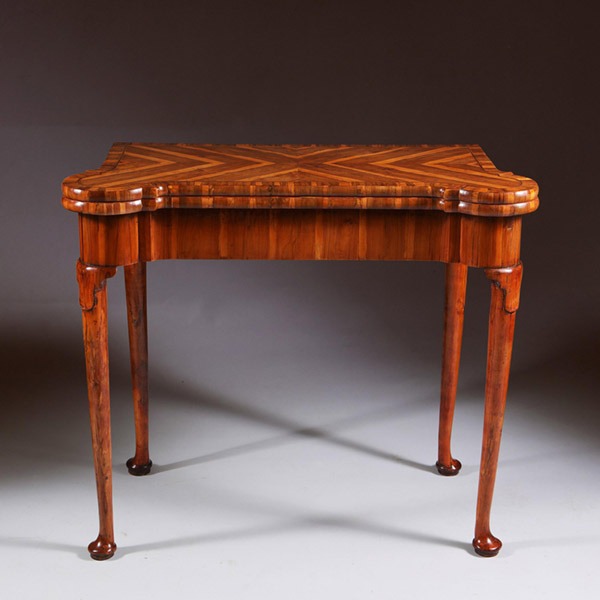
Museum Grade George I Cocus Wood Card Table, Circa 1725, England
Museum Grade George I Cocus Wood Card Table, Circa 1725. England £32,000Follow UsMuseum Grade...

Rare Burr Walnut George II 18th Century Kneehole Desk, circa 1730-1740. England
Rare Burr Walnut George II 18th Century Kneehole Desk, circa 1730-1740. England £28,900Follow UsRare Burr Walnut George II 18th Century Kneehole Desk, circa 1730-1740. England Rare Burr Walnut George II 18th Century Kneehole Desk / Bachelor's...

A Fine 17th Century William and Mary Kingwood Strongbox or Coffre Fort, Circa 1690
A Fine 17th Century William and Mary Kingwood Strongbox or Coffre Fort, Circa 1690 £10,900Follow...

A Fine George III Chippendale Mahogany Dumb Waiter, Circa 1760 England
A Fine George III Chippendale Mahogany Dumb Waiter, Circa 1760 England. £5,600Follow UsA Fine...

A Rare Chinese Chippendale George III cabinet on stand, circa 1760 England
A Rare Chinese Chippendale George III cabinet on stand, circa 1760. England £38,000Follow UsA Rare...

George III mahogany spider-leg table attributed to Thomas Chippendale 1768
A George III mahogany spider-leg table attributed to Thomas Chippendale 1768 £12,000Follow UsA...

Museum Grade George I Cocus Wood Card Table, Circa 1725, England
Museum Grade George I Cocus Wood Card Table, Circa 1725. England £32,000Follow UsMuseum Grade...









